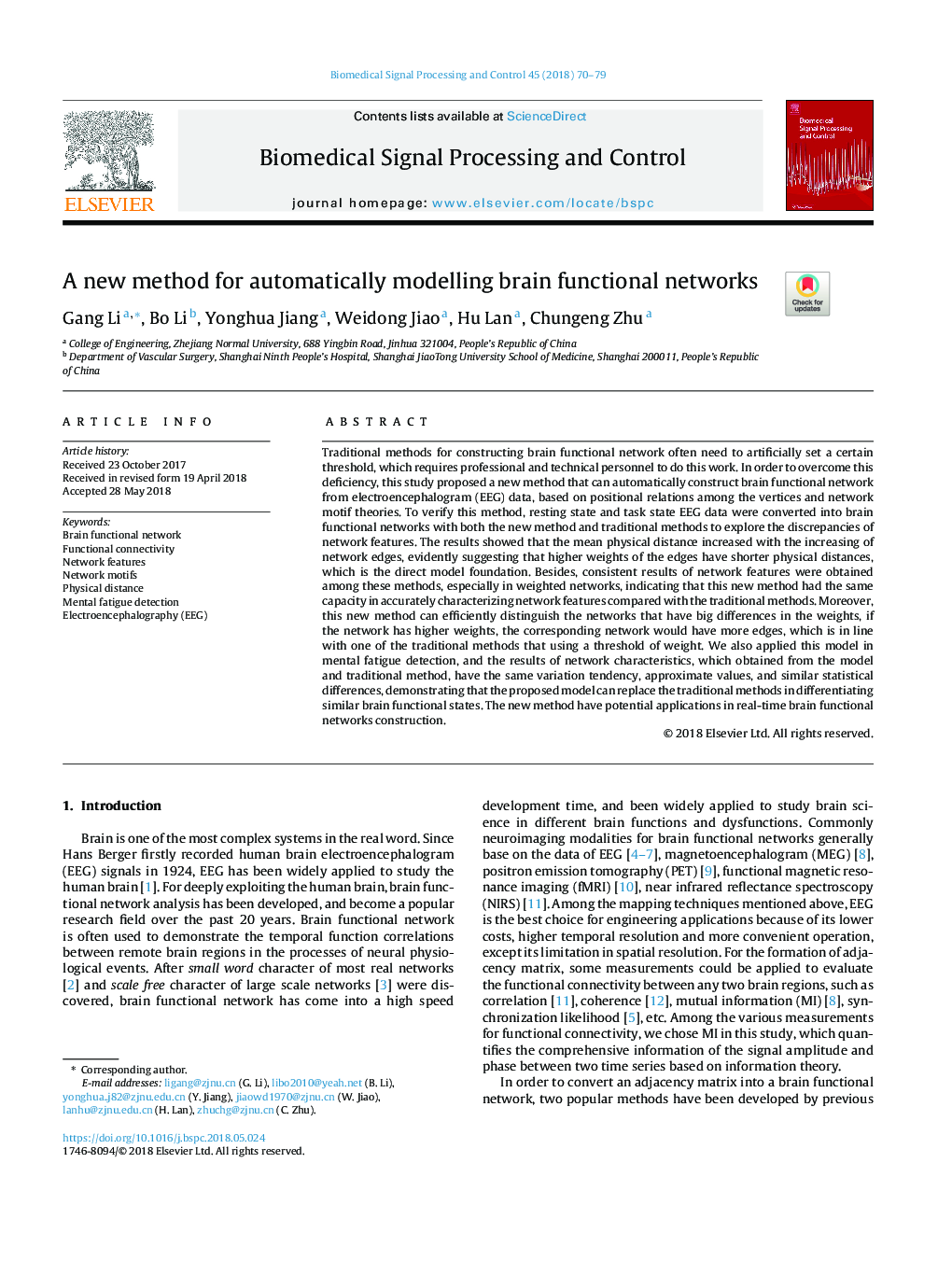| Article ID | Journal | Published Year | Pages | File Type |
|---|---|---|---|---|
| 6950701 | Biomedical Signal Processing and Control | 2018 | 10 Pages |
Abstract
Traditional methods for constructing brain functional network often need to artificially set a certain threshold, which requires professional and technical personnel to do this work. In order to overcome this deficiency, this study proposed a new method that can automatically construct brain functional network from electroencephalogram (EEG) data, based on positional relations among the vertices and network motif theories. To verify this method, resting state and task state EEG data were converted into brain functional networks with both the new method and traditional methods to explore the discrepancies of network features. The results showed that the mean physical distance increased with the increasing of network edges, evidently suggesting that higher weights of the edges have shorter physical distances, which is the direct model foundation. Besides, consistent results of network features were obtained among these methods, especially in weighted networks, indicating that this new method had the same capacity in accurately characterizing network features compared with the traditional methods. Moreover, this new method can efficiently distinguish the networks that have big differences in the weights, if the network has higher weights, the corresponding network would have more edges, which is in line with one of the traditional methods that using a threshold of weight. We also applied this model in mental fatigue detection, and the results of network characteristics, which obtained from the model and traditional method, have the same variation tendency, approximate values, and similar statistical differences, demonstrating that the proposed model can replace the traditional methods in differentiating similar brain functional states. The new method have potential applications in real-time brain functional networks construction.
Keywords
Related Topics
Physical Sciences and Engineering
Computer Science
Signal Processing
Authors
Gang Li, Bo Li, Yonghua Jiang, Weidong Jiao, Hu Lan, Chungeng Zhu,
